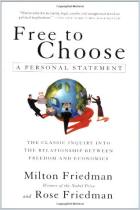
The Road to Serfdom
Recommendation
Friedrich A. Hayek, an Austrian economist, wrote this classic defense of democracy and market economies in 1944. That it remains a bestseller is a testament to the thoughtfulness and thoroughness of his critique of socialism and centrally planned economies. Hayek cites the influence of Karl Marx and other German philosophers who primed citizens to embrace Hitler's totalitarian rule. The Great Depression of the 1930s stepped up questions about capitalism and boosted support for socialism in democratic countries. But Hayek warned that citizens of democracies put their freedom at risk when they extolled the goals of socialism. This edition of Hayek’s classic includes an introduction by the book’s editor, ample annotation of the text and an appendix with related documents, as well an introduction by monetary policy expert Milton Friedman. Readers who want to know the seminal works in this field and to explore the philosophical differences between socialism and capitalism should know this work.
Summary
About the Author
Friedrich August von Hayek (1899-1992), an economist from Vienna, Austria, and a proponent of market-based economies, was co-winner of the Nobel Memorial Prize for Economics in 1974 and recipient of the US Presidential Medal of Freedom in 1991.















Comment on this summary or Iniciar a Discussão